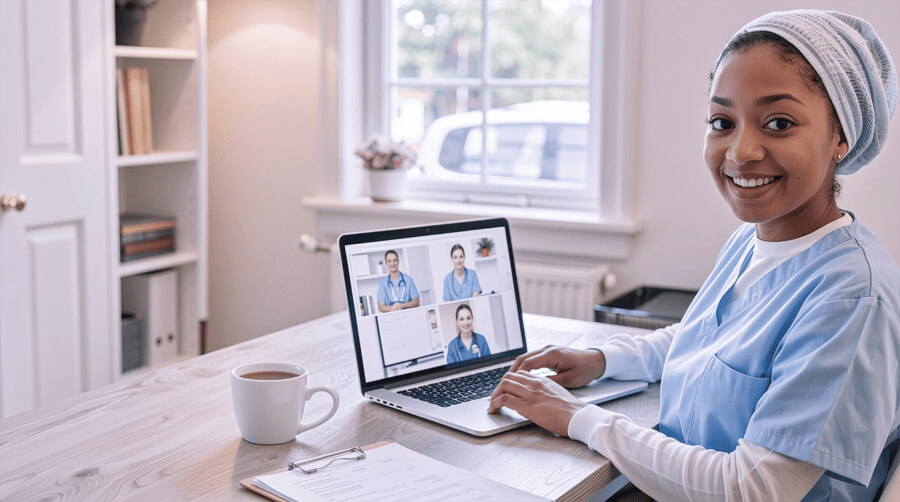Opening Scene
It’s 11:30 p.m. in Bima, a small town on Sumbawa Island, Indonesia. The health post is quiet. Midwife Ayu sits at a worn wooden desk, phone plugged into the only working outlet, revising a module on postpartum haemorrhage.
A decade ago, she would have travelled two days to the provincial capital for this training, leaving her post unmanned. Tonight she learns in place.
Why access is the issue
Fewer than one-third of health workers in Sub-Saharan Africa access regular, in-person continuing professional development (CPD).
In archipelagic or mountainous parts of Asia, geography alone makes centralised training prohibitive. Skills fade; protocols diverge. Patients pay the price.
The digital case
Reach
Mobile penetration now exceeds three quarters of adults in South Asia and more than half in Sub-Saharan Africa. Even basic smartphones can deliver bite-size, interactive content—videos, quizzes, decision trees—usable between clinic duties.
Cost
After development, digital courses can be delivered at a fraction of face-to-face cost per learner. Savings can be shifted to supervised practice, equipment, and preceptorships.
Flexibility
Self-paced modules allow learning without pulling staff off rosters. Studies comparing digital or blended formats to traditional classrooms in LMICs show equal or better knowledge retention at 3–6 months when materials are localized and assessments are spaced.
Blended competence
No one learns to cannulate or resuscitate from video alone. The strongest models pair online theory with in-person skills labs and on-the-job mentoring—often via regional “hub” facilities hosting periodic practical sessions for surrounding clinics.
Implementation realities (and fixes)
- Bandwidth & power: Offline-first apps, downloadable modules, and solar/UPS support for training hubs keep learning continuous during outages.
- Language & culture: Local language content and contextual case studies lift engagement and pass rates compared to generic translations.
- Completion & credit: Linking modules to regulatory CPD points, adding supervisor check-ins, and setting clear deadlines push completion rates from middling to strong.
Case Window (Composite from public programs)
A district network in Southeast Asia deploys a blended neonatal resuscitation course: theory by mobile app, monthly skills circles at the district hospital, on-call mentors by messaging.
Over a quarter, accuracy in simulation drills rises, and average referral times for high-risk newborns shorten—small increments with life-saving potential.
Oakvale’s Perspective
E-learning isn’t a stopgap; it’s how over-stretched systems close distance and time gaps without sacrificing service.
Our stance is simple: design for low bandwidth, local languages, and real rosters—and always anchor digital learning to hands-on practice so knowledge becomes competence at the bedside.
References
- WHO health workforce and CPD access reports in LMICs.
- GSMA Mobile Economy data for Africa and Asia.
- World Bank analyses on digital training cost efficiency.
- Peer-reviewed studies on blended learning efficacy and skills retention in LMIC contexts.
